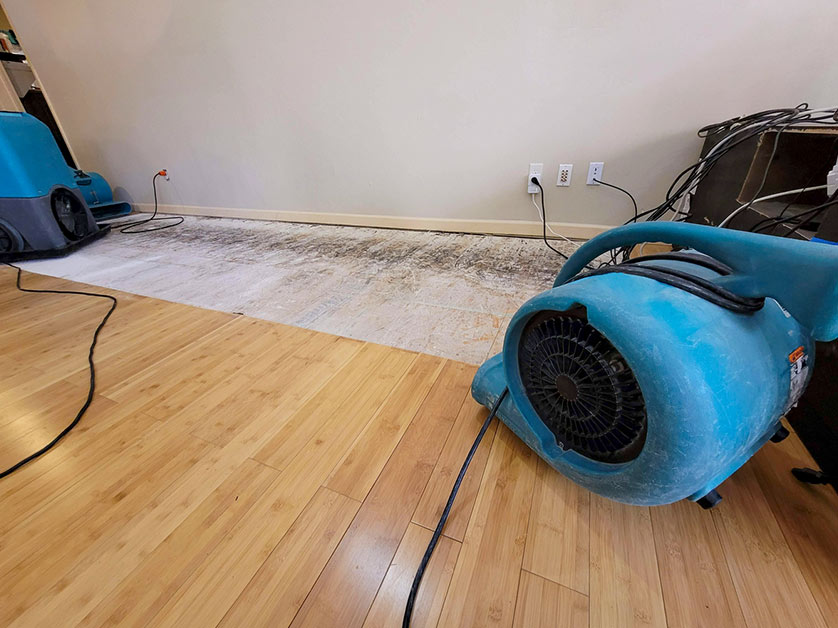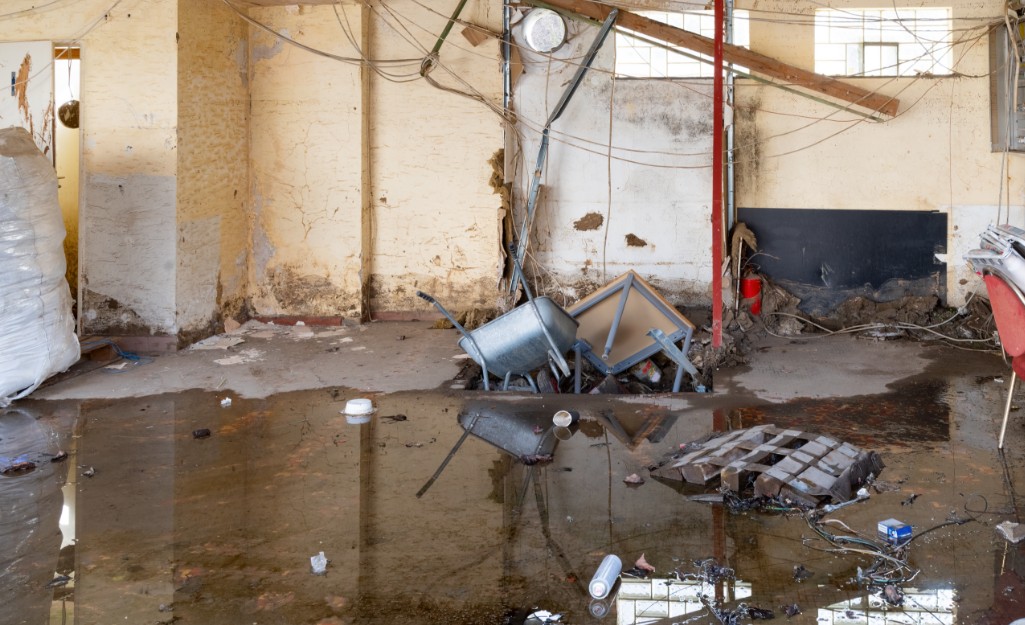What to expect from professional Water Damage Restoration
Wiki Article
Top Tips for Effective Water Damage Restoration: Protect Your Residential Or Commercial Property Today
Water damage can strike suddenly, causing considerable interruption and possible threats. Reliable restoration calls for a systematic method to lessen additional harm. From examining the damage to applying preventative procedures, each step plays an essential function in protecting residential property. Understanding these approaches can make all the distinction in the consequences of a water-related dilemma. What important actions should be prioritized to guarantee comprehensive protection?Examine the Damage Instantly
When a water damage event occurs, it is necessary to analyze the damage right away to mitigate additional problems. This first evaluation helps figure out the extent of the damage and recognizes affected areas. Water can leak into wall surfaces, floorings, and furniture, causing mold development and structural instability otherwise resolved immediately. A detailed evaluation should consist of checking for discoloration, moisture, and mildewy odors, which indicate moisture presence. It is also crucial to document the damage through photographs and notes for insurance coverage purposes. Engaging specialists for an extra in-depth assessment may be required, particularly when managing hidden or considerable damage. Water Damage Restoration. Early recognition and precise evaluation lay the structure for effective restoration and protect the property from added problemsShut Off the Supply Of Water
Shutting off the water is a necessary action in stopping additional damage during a water-related occurrence. When a leakage or flooding takes place, immediate action is important to minimize the extent of the damage. Locating the primary water shut-off shutoff must be a priority. This shutoff is frequently situated near the water meter or where the water line gets in the home. Once located, transforming the valve clockwise will quit the circulation of water. In instances where the main shutoff is unattainable, private shut-off valves for devices might also be utilized. Without delay shutting down the water system not only safeguards the residential or commercial property from added damage however also helps with the succeeding restoration process, making certain that recuperation efforts can begin immediately.Eliminate Excess Water Promptly

Getting rid of excess water immediately is essential for reducing damage and avoiding mold and mildew growth in influenced locations. The longer water remains touching materials such as drywall, timber, and insulation, the greater the danger of architectural damage and the advancement of mold and mildew. Water Damage Restoration. Property owners should act quickly to assess the circumstance and utilize ideal tools, such as wet vacuums or pumps, to remove standing water effectively. If the quantity of water is significant, contacting expert restoration solutions may be required, as they can give specialized equipment and expertise. Furthermore, eliminating furniture and belongings from the damaged area can help to reduce damage and help with the general restoration procedure. Prompt activity not just protects residential or commercial property however also help in a smoother recuperation trip
Dry the Affected Area
After removing excess water, it is vital to dry the afflicted location completely. This entails removing any kind of standing water and boosting air blood circulation to assist in dissipation. Reliable drying out will certainly aid prevent mold development and more damage.
Eliminate Standing Water
Quickly addressing standing water is essential for efficient water damage restoration. The presence of stagnant water can result in additional building damage and produce an atmosphere for mold development. To minimize these risks, it is necessary to eliminate standing water as rapidly as possible. This procedure normally includes using submersible pumps, damp vacuums, or specialized removal devices. Experts recommend evaluating the depth and level of the water before choosing on the appropriate method for elimination. Security precautions need to also be taken, consisting of wearing protective equipment and ensuring power is shut off in affected areas. When the standing water is properly eliminated, the drying process can start, additionally safeguarding the building from continuous damage.Increase Air Flow
Boosting air flow is essential for properly drying out areas influenced by water damage. This procedure helps to accelerate evaporation, minimizing the risk of mold and mold development. Specialists frequently advise utilizing fans to produce a constant airflow throughout the space. Putting box fans in windows can pull in fresh air, while high-velocity fans can guide airflow in the direction of wet surfaces. Water Damage Restoration. Additionally, opening up home windows and doors enables cross-ventilation, enhancing the drying process. Dehumidifiers can likewise be used to remove excess dampness from the air, more aiding in drying. By ensuring that air flows freely, homeowner can considerably lessen the long-lasting impacts of water damage and safeguard the honesty of their frameworkCheck for Mold Growth
Mold growth is a severe issue adhering to water damage, as it can lead to health issues and architectural deterioration. After any flooding or leakages, it is vital to perform a thorough evaluation of the affected areas. This includes checking covert spaces such as behind wall surfaces, under carpets, and in attic rooms or cellars where moisture might remain. Signs of mold and mildew include a moldy odor, staining on surface areas, or visible development. Home owners should utilize protective gear when examining, as mold spores can position health and wellness dangers. If original site mold and mildew is discovered, it is crucial to address it instantly, as postponing remediation can aggravate the problem and increase the danger of serious health and wellness worries for occupants. Early treatment is key to effective mold monitoring.

Repair Work and Recover Damaged Frameworks
When resolving water damage, it is necessary to first evaluate the architectural stability of the influenced areas. This examination helps identify prospective risks and educates the essential repair approaches. Engaging specialist restoration solutions guarantees that the restoration procedure is carried out securely and properly.Examine Structural Integrity First
Before starting any water damage restoration, it is vital to evaluate the architectural integrity of the afflicted area. This analysis helps recognize any type of jeopardized elements, such as light beams, structures, or wall surfaces, which may posture safety and security risks - Water Damage Restoration. Inspecting for indicators of warping, fracturing, or mold and mildew growth is critical, as these signs can disclose underlying damage that requires immediate interest. In addition, recognizing the extent of the damage can guide restoration initiatives and determine whether repair work are viable or if replacement is essential. It is crucial to document searchings for completely, as this details can be beneficial for insurance cases or future referral. Focusing on structural assessment warranties that restoration initiatives continue securely and properly, eventually securing the building and its ownersUsage Specialist Restoration Services
Using professional restoration services is important for effectively fixing and recovering damaged frameworks after water events. These specialists possess the required training, devices, and experience to assess and reduce water damage thoroughly. They can recognize surprise problems, such as mold growth and architectural weak points, that might not be right away obvious. Professional services also use advanced drying techniques and equipment, ensuring that all wetness is gotten rid of to stop more damage. Additionally, they follow market requirements and policies, ensuring that the restoration procedure is reliable and secure. By involving restoration experts, residential or commercial property owners can expedite healing, minimize long-lasting damage, and eventually protect their financial investment. This positive technique is necessary in preserving the honesty and security of damaged frameworks.Prevent Future Water Damage
To effectively stop future water damage, house owners need to embrace a proactive method to maintenance and fixings. Regular examination of rain gutters, roofing systems, and downspouts is necessary; clogged rain gutters can result in water overflow and roof covering leaks. Furthermore, looking for leaks in plumbing components and home appliances can combat possible damage. House owners should also think about installing sump pumps in cellars or low-lying areas to manage water accumulation. Sealing fractures in structures and making certain proper drainage around the building are important actions in protecting against water breach. Additionally, maintaining humidity levels with dehumidifiers can protect against mold and mildew growth. By applying these safety nets, home owners can greatly lower the threat of water damage and secure their residential property for the long term.When a water damage event happens, it is necessary to analyze the damage quickly to alleviate more concerns (Water Damage Restoration). Eliminating excess water without delay is important for reducing damage and stopping mold and mildew development in affected locations. Promptly dealing with standing water is vital for reliable water damage restoration. The presence of stagnant water can lead to more building damage and develop a setting helpful to mold growth. Prior to starting any kind of water damage restoration, it is vital to assess the structural honesty of the affected location
Report this wiki page